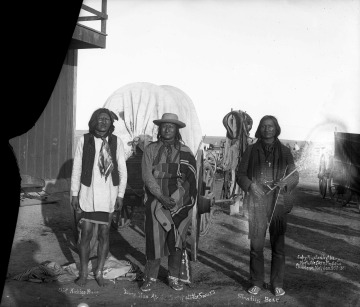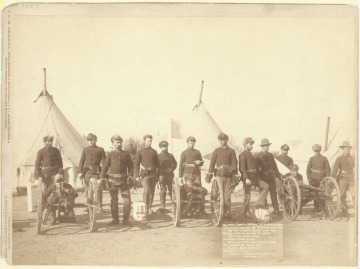1890: U.S. Cavalry massacres Lakota at Wounded Knee
The U.S. Army’s 7th Cavalry arrives at Wounded Knee, near Wounded Knee Creek, South Dakota, where Big Foot’s Lakota band are camped on the morning of December 29. Women and children, numbering about 230, are in their tipis, while the men, about 120, hold council. On this morning, 470 troops surround the camp; four Hotchkiss rapid-fire artillery guns are trained on the camp from a nearby hill. A shot is fired, perhaps by accident, and the soldiers and Lakota warriors begin firing.
At Wounded Knee, Indian women and children are hunted down, even as they flee. Whole families are wiped out. Miles away, a Dakota doctor named Charles Eastman strains to hear what sounds like gunfire. More than 153 Lakota men, women, and children are killed, as well as 25 U.S. soldiers.
- Theme
- Native Rights
- Region
- Great Plains
Ghost dance participants Chief Kicking Bear, Young Man Afraid, and Standing Bear,1891. Though the U.S. government has cut food rations guaranteed by treaty in return for lands taken, and epidemics are killing the Lakota, the sacred promises of the Ghost Dance give the band hope.
Courtesy Denver Public Library, Western History Collection.
Soldiers from Battery "E" of the 1st Artillery posed with three Hotchkiss artillery guns in front of Army tents in South Dakota, 1891. Hotchkiss guns were used in Army campaigns against Native peoples.
Courtesy Library of Congress

